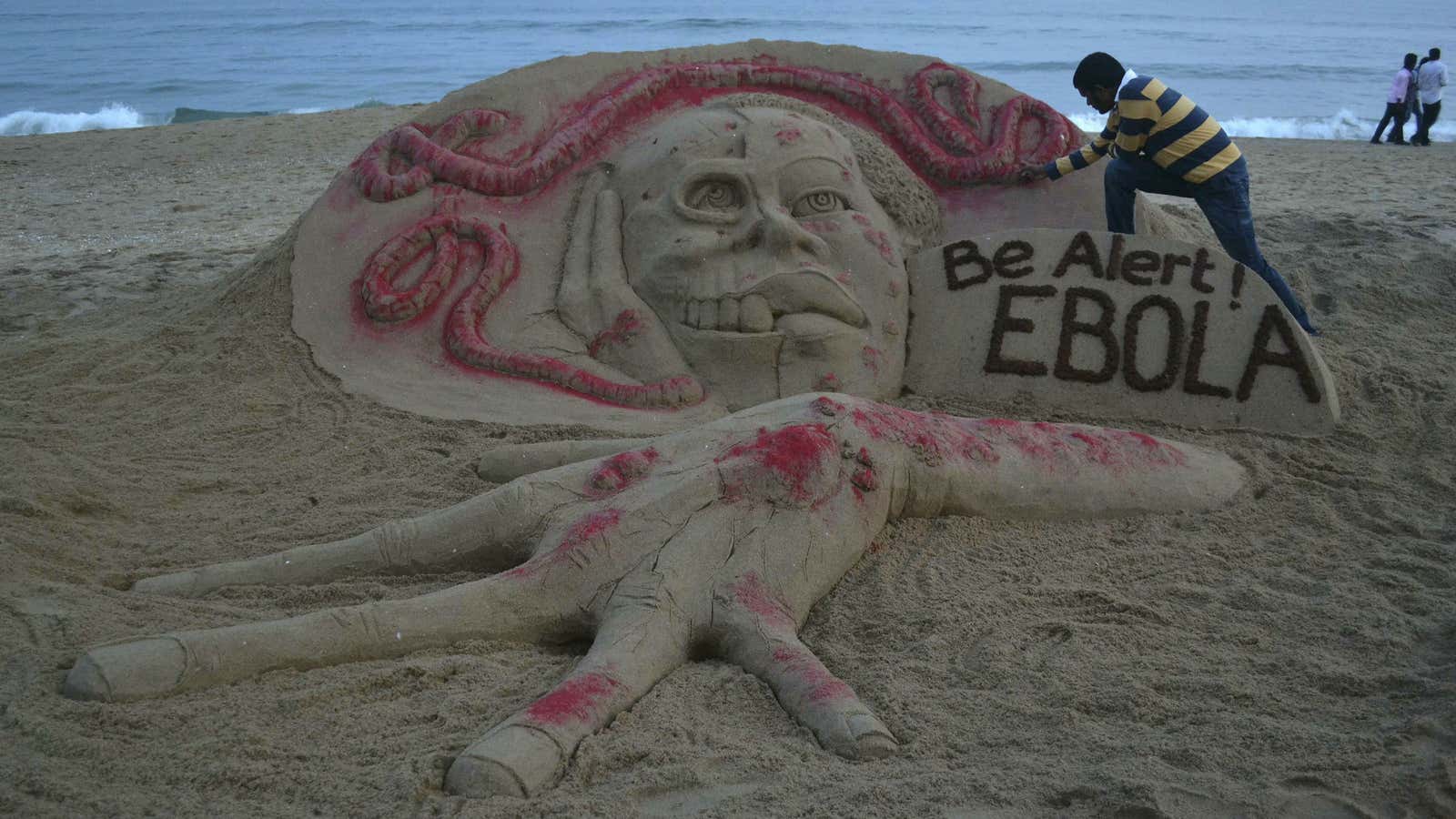On Nov. 18, news broke that a Indian man returning from Liberia had been quarantined inside Delhi’s Indira Gandhi Airport health facility. According to an official report, the man, a 26-year-old had arrived in Delhi on Nov. 10, and tested positive for the virus.
Ebola wasn’t found in his blood, which is the condition the World Health Organization requires for recovery—but it was still present in his semen, the report said.
During the mandatory screening, the man reported having a “febrile illness” and being admitted to a health facility in Liberia from Sept. 11 to 30. The official Ministry of Health and Family Welfare (MOHFW) release on the case (see Nov. 18 releases) says:
carried a certificate of medical clearance from the Ministry of Health and Social Welfare, Government of Liberia mentioning that ‘he has successfully undergone care and treatment related to Ebola Virus Disease and after post treatment assessment he has been declared free of any clinical signs and symptoms and confirmed negative by laboratory analysis.’
Men who have successfully recovered from Ebola are advised to use condoms for up to six months, as the virus remains sexually transmittable through their semen even after traces are absent from the blood. This hasn’t stopped other countries from declaring former patients Ebola-free, including the US, where public concern about Ebola is high:
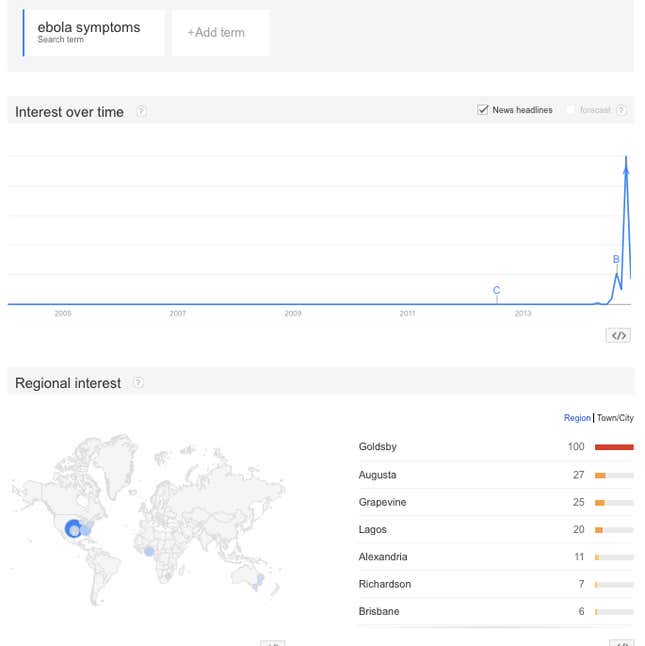
While the measures put in place in India may seem excessively strict, they were justified by the ministry as “abundant caution” in the face of the devastating effects an Ebola outbreak in India could have in the country. India’s response certainly seems stricter than the rest of the world’s—although what the official policy is, and what is happening inside the Airport Health Organization’s Quarantine Centre remain mysterious.
The only person who is “allowed” to speak on the matter, according to 15 different officials from the MOHFW, Airport Health Organization, and Ebola help line that Quartz has spoken to, is Manisha Varma, the Director of Media at the MOHFW. In the past 24 hours, Quartz has called her office and mobile numbers over a dozen times (both numbers were readily provided in the name of transparency) as well as texted her, but there has been no response at all.
Even doctors working at the Airport “Control Room” aren’t entirely sure of what measures India has in place—one doctor who spoke to Scroll India said he wasn’t sure whether the patient would be fully quarantined or simply be monitored daily.
What we can tell you for sure is this—when people land in Delhi from flights that may have originated from countries currently affected by the Ebola outbreak, they are given a form in which they must declare whether or not they have been exposed to the Ebola Virus Disease (EVD).

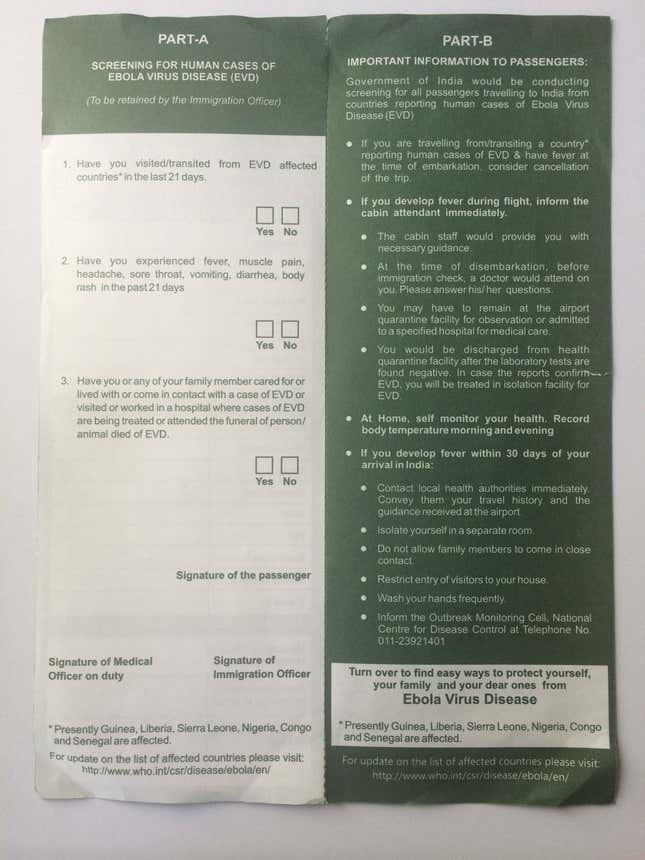
A sign in the airport also instructs travelers about the risks of Ebola:
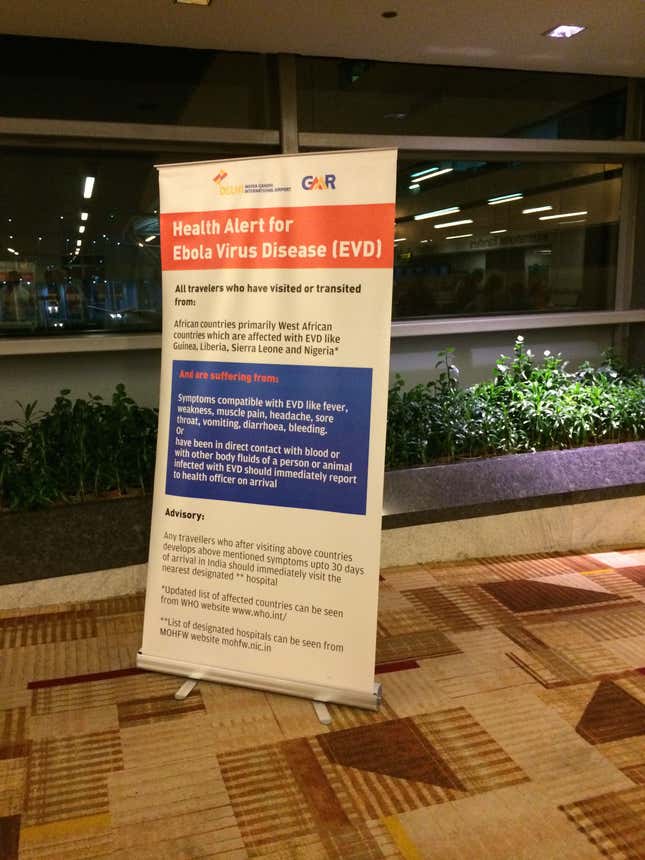
After that, there is a counter attended to by surgery mask wearing employees:

It is unclear what people are meant to do at that counter, since the forms are actually collected at immigration:
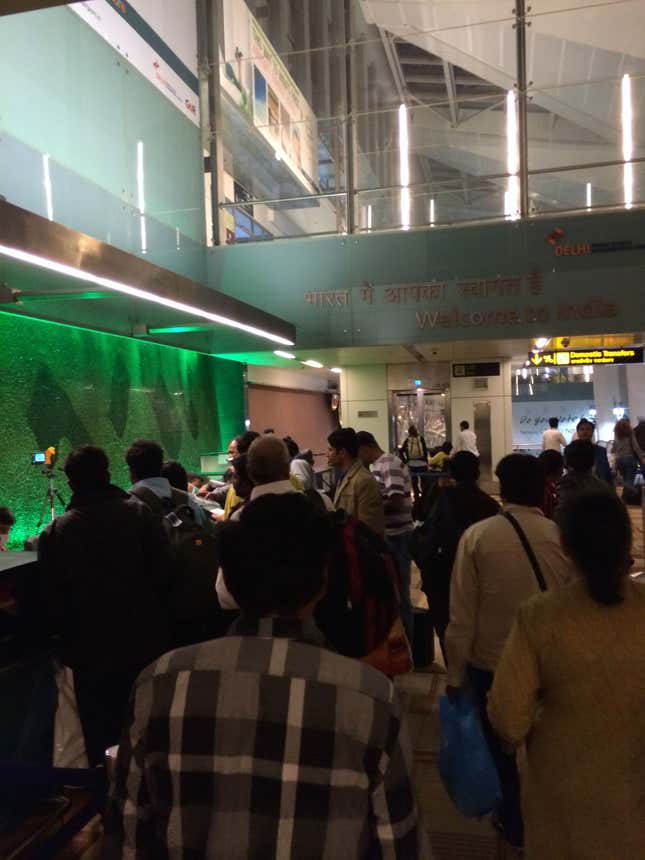
Presumably, the physical screening happens at some point after this. Blood samples are collected, and then semen.
This brings up a few questions, like—how exactly does this happen? Are men warned that this might happen when they board a flight to India from a EVD country? Do women also undergo a similar kind of screening? Are any exceptions put in place—for people like priests who made vows of celibacy, for instance?
According to the Hindustan Times, the man returning from Liberia is not the first person to be quarantined:
The government has screened 21,799 people at airports since it began screening for Ebola two months ago, but nobody has tested positive for the disease in India. So far, 1,200 travelers have been identified as suspected cases and 485 passengers have been quarantined at a Delhi facility.
Which just raises more questions, like: How big is the capacity of the isolation ward? Is anyone else in there now?
India is probably doing a remarkable job preventing Ebola from spreading in the country—it would be helpful, however, if someone could just explain how.
